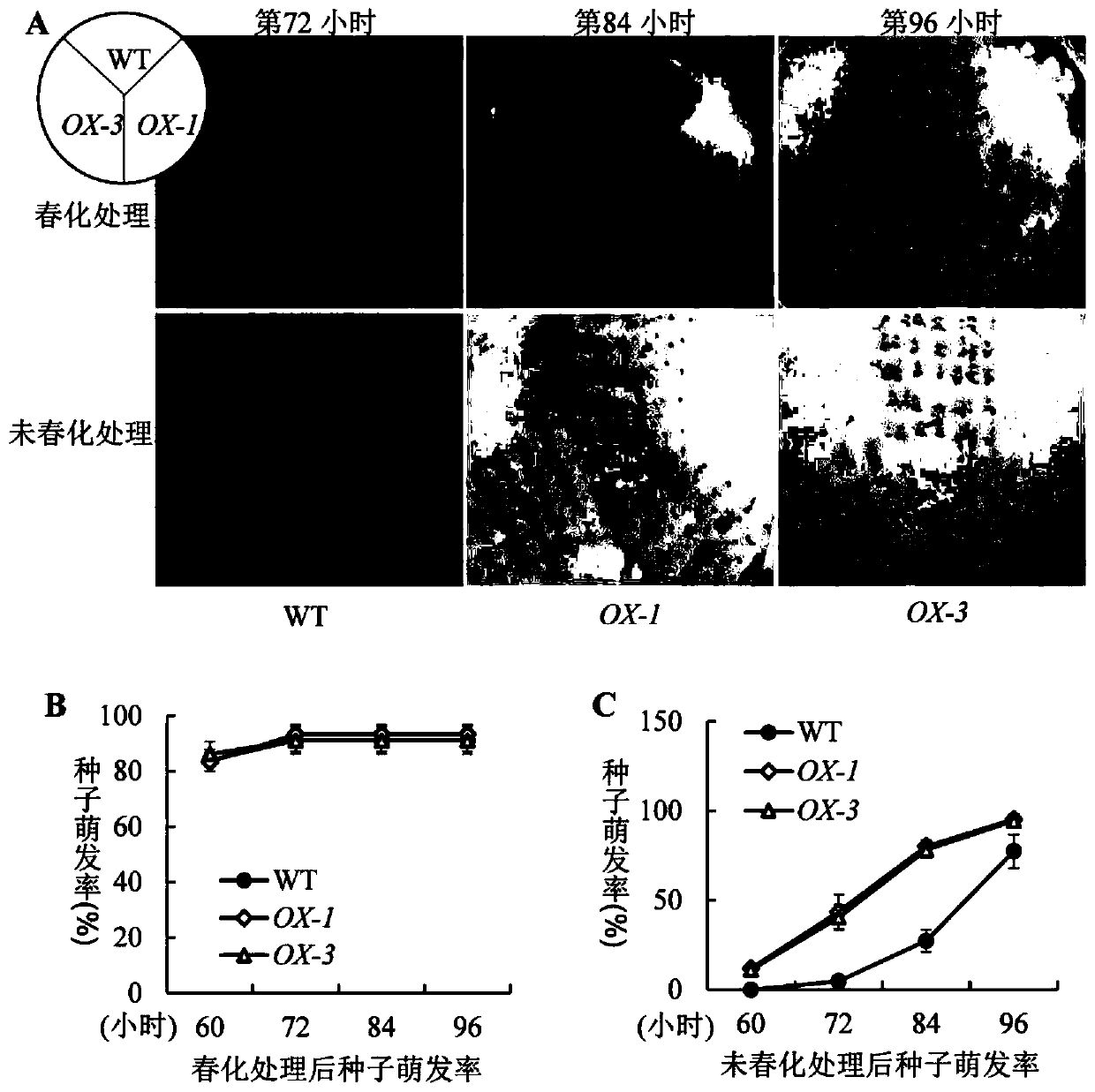Gene related to dormancy release of flower bulbs, and application thereof
A flower and bulb technology, applied in the fields of application, genetic engineering, plant genetic improvement, etc., achieves important theoretical significance and application potential, reduces production costs, and shortens the growth cycle
- Summary
- Abstract
- Description
- Claims
- Application Information
AI Technical Summary
Problems solved by technology
Method used
Image
Examples
Embodiment 1
[0020] Tulip dormancy release-related gene DRR1( D ormancy R release R elated 1) Obtained:
[0021] 1. Cloning of DRR1 gene
[0022] In this study, the transcriptome analysis of two tulip varieties with significant differences in low temperature requirements was carried out to obtain the differentially expressed gene DRR1. Then, according to the full-length transcriptome sequencing results of the third generation of tulip, primers were designed to clone the DRR1 sequence using cDNA as a template. Sequencing results showed that the CDS region of the DRR1 gene was highly homologous (96.21% homology) to the sequence of the tulip GBOF-1 gene (GenBank No. AAD56411.1). Then, using the tulip genome DNA as a template, the genome sequence of DRR1 was cloned, and the sequence analysis showed that DRR1 contained 5 exons and 4 introns. The structural diagram of the gene is shown in figure 1 . The results of protein sequence analysis showed that DRR1 encodes a bHLH transcription facto...
Embodiment 2
[0026] Application of tulip DRR1 gene in the field of plant dormancy relief:
[0027] The CDS sequence (SEQ ID NO.1) of the DRR1 gene was constructed into the pCAMBIA1300 vector, and transformed into Agrobacterium GV3101, and the genetic transformation of Arabidopsis was carried out by using the flower soaking method to obtain multiple transgenic plants overexpressing DRR1, and then detected by the seed germination experiment Regulation of tulip DRR1 gene in Arabidopsis seed dormancy. Experimental results such as figure 2 As shown, OX-1 and OX-3 in the figure represent two independent DRR1 overexpression Arabidopsis transgenic lines, which are used to illustrate the reproducibility of the results, and WT represents the common Arabidopsis control without transgenic treatment. Depend on figure 2 It can be seen that the germination rate of OX-1 and OX-3 transgenic plants is very good under low-temperature vernalization treatment or without low-temperature vernalization treatm...
PUM
 Login to View More
Login to View More Abstract
Description
Claims
Application Information
 Login to View More
Login to View More - R&D
- Intellectual Property
- Life Sciences
- Materials
- Tech Scout
- Unparalleled Data Quality
- Higher Quality Content
- 60% Fewer Hallucinations
Browse by: Latest US Patents, China's latest patents, Technical Efficacy Thesaurus, Application Domain, Technology Topic, Popular Technical Reports.
© 2025 PatSnap. All rights reserved.Legal|Privacy policy|Modern Slavery Act Transparency Statement|Sitemap|About US| Contact US: help@patsnap.com


